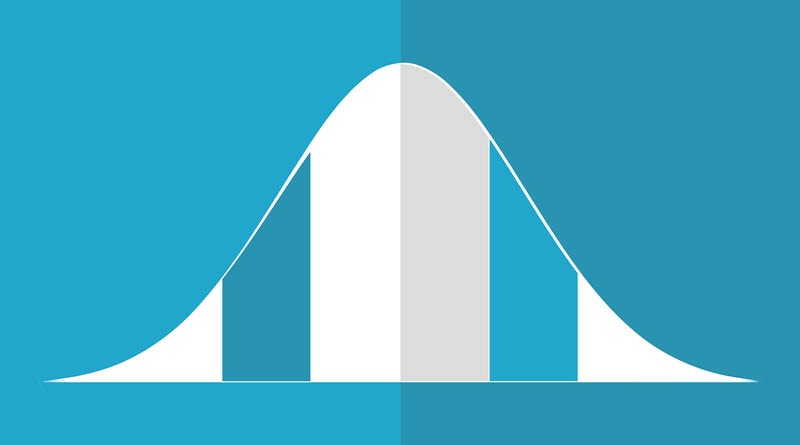
Neurodiversity: One View on What it is, and Why it is
By Nicholas Bamonte
On the Emergence of Words
The term “neurodiversity” is one that has begun to penetrate into the wider public consciousness and vocabulary. While this is one of the goals of the movement that has coined the term, like other social movements that have introduced formerly purely academic terms or self-made terms into popular culture, this has not been a smooth or uniform process. While words are typically associated with strong and ridged universal definitions, the truth is that all language is at least somewhat individualized, with different people’s life experiences shaping some of the more implicit parts of a word’s definition, such as the connotations and implications that are associated with a word. These individualized definitions can, in turn, influence the official definitions if shared by enough people. This evolution of a language and the words within it is a natural consequence of its use.
However, in spite of the conventional wisdom, being natural is not an inherently positive trait, and evolution does not guarantee that something will change for the better, at least as we would perceive it. To this day, the concepts of depression and ADHD are still recovering from damage that they sustained during the time when the words where first introduced into the public lexicon, whether by the half-understood definitions that were initially circulated, or negative association with certain early adopters. These associations with melodramatic people over-exaggerating their common sadness or typical distractibility continue to color people’s opinions of these conditions, even going as far as to influence people to doubt their very existence. This is my concern as I see more and more people begin to use this word. Therefore, I want to take this moment to share my own understanding of neurodiversity as a concept, in the hopes that it can help to spread not only awareness, but understanding.
Of Flies and Lords
To me, neurodiversity is just another form of biodiversity, an important aspect of any species’ health. Biodiversity is, simply based on its etymology, “diversity of life”. In terms of ecology, this can refer to the amount and variety of life forms in an area. However, when used in the context of a single species, the definition changes somewhat. To help explain this change in meaning, I will need to borrow an experiment used to demonstrate evolution. Bear with me, it will all make sense by the time I’ve finished.
Take a population of Fruit Flies and place them within a glass tank, similar to what you would use to house a pet fish or reptile. Your goal is to take a population of Fruit Flies that can only go approximately 1 hour without food, and make them able to survive 4 hours without food. You do this by waiting over an hour, until only a handful of your original flies remain, and then feeding them.
Now, you may be wondering how, even though the flies are only supposed to survive an hour without food, some have survived. This is thanks to the “bell-shaped curve”, one of the most common phenomena in statistics and nature. You see, by taking a random population, measuring for a specific characteristic (such as the length of time an animal can go without food), and placing these measurements on a graph, the results almost always conform to the shape of a hill, or bell. The top of the bell represents the most frequent result, in this case, a fly surviving for 1 hour without food. To the left or right of that top most point, the intensity of the measured characteristic decreases or increases, in this case, flies that will starve to death before an hour, and flies that will survive for longer than 1 hour. The lower on the “hill”, the less frequent that result will be, with the most extreme examples only being observed a few times in the population. In short, outliers and differences of all kinds, including brain structure and function, are a mathematical inevitability. You have a group of Fruit Flies, some will inevitably be able to survive slightly longer without food. This means that once the surviving Fruit Flies lay eggs and produce a new generation, there will still be some who starve quicker, and some who will last longer. However, since only the right side of the previous generation’s bell-shaped curve survived, they have become the new basis for what is considered, “average”, among the population. The average amount of time the flies will survive without food will go up, say to 1 hour and 15 minutes. By repeating this process over several generations, the average time that it takes for a fly to starve will go up, and you will eventually reach a population where surviving 4 hours without food is the norm.
The Eggs in Other Baskets
When referring to a single species, biodiversity is how varied the traits observed in the species are. While nature will tend to form bell-shaped curves, how wide or narrow they are can vary. Sometimes, based on the species or trait being observed, only small differences among individual examples will be seen. It could be because the trait is heavily specialized, and any major deviance from the standard design will result in the individual animal being unable to survive, or it could be the result of a “population bottle-neck” where a large percentage of a species was wiped out by chance, leaving a small total population to deviate from. This is often seen as a detriment to the overall health of a species, because this biodiversity is a backbone of evolution. A species as a whole evolves because there are small subsets that, while not optimized for their current environment, possess traits that are better suited for a future environment. The outliers of a species serve an important role as the diverse stocks in the portfolio, the insurance that a sudden shift in the environment won’t take the entire species out, that the traits needed to survive in that brave new world are already present within the species.
To be neurodiverse is to be different. To be a hunter gatherer in a world of farmers. To be a straightforward, literal person in a world of innuendo and ambiguous meaning. To struggle not because you are objectively worse, but because the standards of the world were built with qualities that you don’t conform to your mind. To be what humanity may one day need to be.

My name is Nicholas Bamonte, and I am neurodivergent. My formal diagnosis’ are dyslexia and ADHD, though the aspect of neurodiversity that I have struggled with the most throughout my life is slow processing speed, which is not typically recognized as a diagnosable disorder in itself. Thanks to early intervention, I do not really remember much of my struggles with dyslexia, though the poor executive functioning aspect of ADHD and often feeling behind the rest of the crowd are a different manner entirely. A graduate of FIU with a Bachelor of Arts in Psychology, I hope to assist the millions of people who struggle with learning differences and the difficulties that come with living in a world not designed with their particular brains in mind. Even if only as an advocate who helps to spread awareness, the feeling that you’re not alone and that your condition is recognized by society goes a long way in itself.




